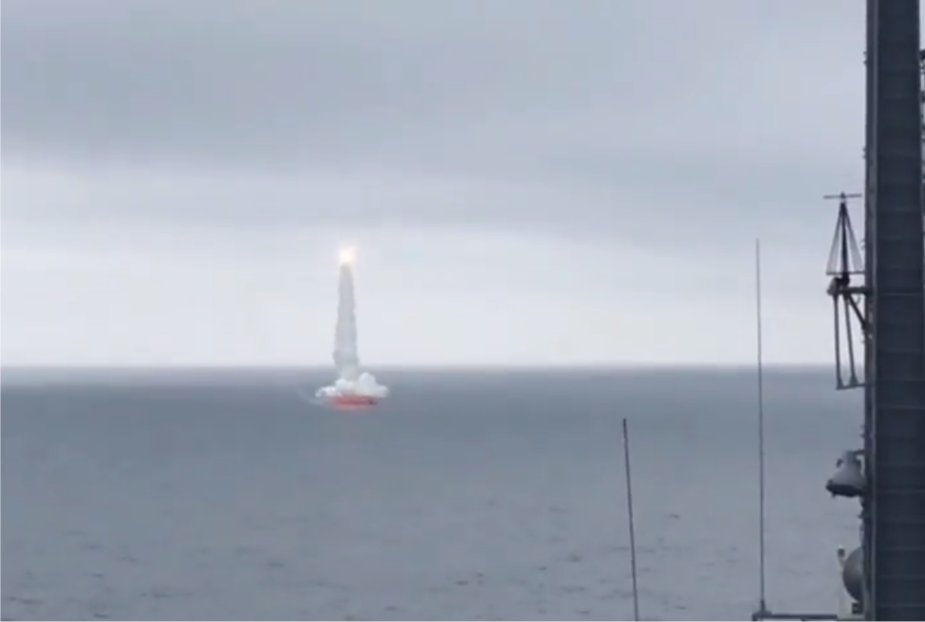According to a video published by Ria Novosti on April 14, 2022, a Russian Kilo-class submarine (Volkhov or Petropavlovsk-Kamchatsky) successfully fired a Kalibr missile in the Pacific.
Follow Navy Recognition on Google News at this link
 Kalibr missile fired from Russian Kilo-class submarine (Picture source: Ria Novosti)
Kalibr missile fired from Russian Kilo-class submarine (Picture source: Ria Novosti)
The Kilo-class, Soviet designation Project 877 Paltus, NATO reporting name Kilo, is a class of diesel-electric attack submarines designed and built in the Soviet Union for the Soviet Navy.
The class was built until the mid-1990s, when production was switched to the more advanced Project 636 Varshavyanka (Russian: Варшавянка, meaning "Varsovian (inhabitant of Warsaw; feminine)") variant, also known as Improved Kilo-class in the West.
Project 636.3 submarines are the third generation of diesel-electric submarines which are most noiseless in the world. The new submarine features stealth technology as well as extended cruising range and the ability to strike surface, land, and underwater targets.
They develop an underwater speed of 18 knots, submerge to 300 meters and have a cruising capacity of 45 days. The crew comprises 52 men, the underwater displacement is close to four thousand tons.
They carry Kalibr missiles to strike at the surface (3M-54 and 3M-541) and ground targets (cruise missiles 3M-14) and have new electronic equipment.
The Kalibr is a family of Russian-made surface to ship, submarine-launched and airborne anti-ship and coastal anti-ship (AShM), land-attack cruise missiles (LACM), and anti-submarine missiles developed by the Novator Design Bureau. According to Russian military sources, the missile has an estimated range of around 1,500 to 2,500 km.



